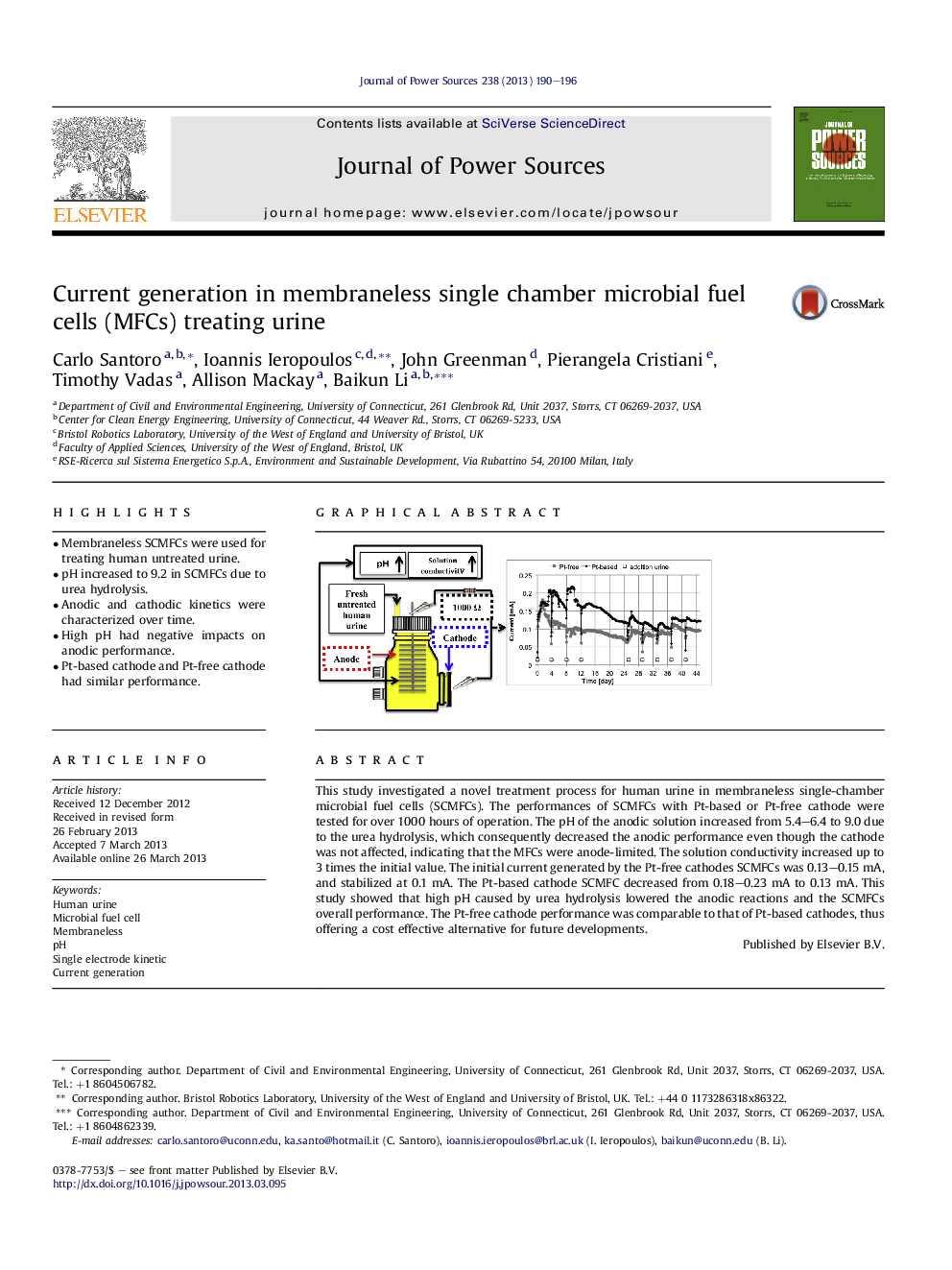| Article ID | Journal | Published Year | Pages | File Type |
|---|---|---|---|---|
| 1284349 | Journal of Power Sources | 2013 | 7 Pages |
•Membraneless SCMFCs were used for treating human untreated urine.•pH increased to 9.2 in SCMFCs due to urea hydrolysis.•Anodic and cathodic kinetics were characterized over time.•High pH had negative impacts on anodic performance.•Pt-based cathode and Pt-free cathode had similar performance.
This study investigated a novel treatment process for human urine in membraneless single-chamber microbial fuel cells (SCMFCs). The performances of SCMFCs with Pt-based or Pt-free cathode were tested for over 1000 hours of operation. The pH of the anodic solution increased from 5.4–6.4 to 9.0 due to the urea hydrolysis, which consequently decreased the anodic performance even though the cathode was not affected, indicating that the MFCs were anode-limited. The solution conductivity increased up to 3 times the initial value. The initial current generated by the Pt-free cathodes SCMFCs was 0.13–0.15 mA, and stabilized at 0.1 mA. The Pt-based cathode SCMFC decreased from 0.18–0.23 mA to 0.13 mA. This study showed that high pH caused by urea hydrolysis lowered the anodic reactions and the SCMFCs overall performance. The Pt-free cathode performance was comparable to that of Pt-based cathodes, thus offering a cost effective alternative for future developments.
Graphical abstractFigure optionsDownload full-size imageDownload as PowerPoint slide
